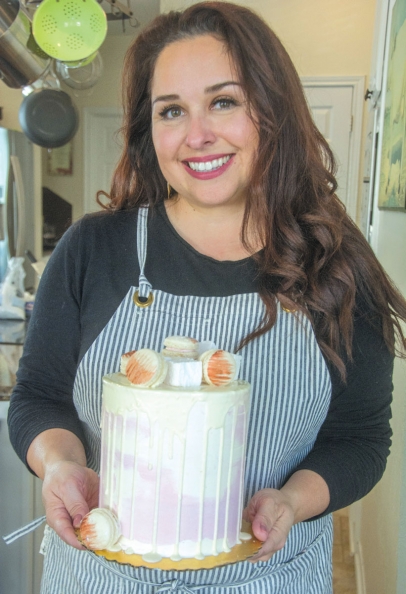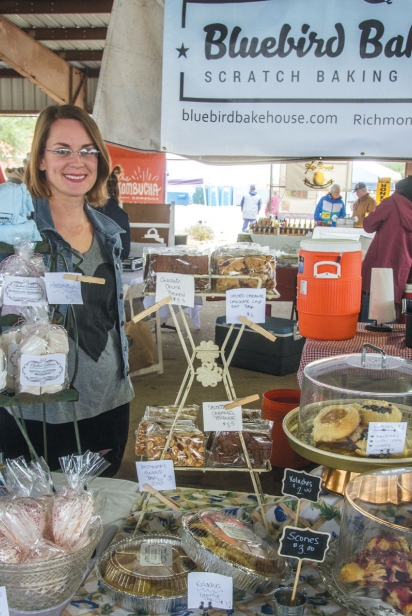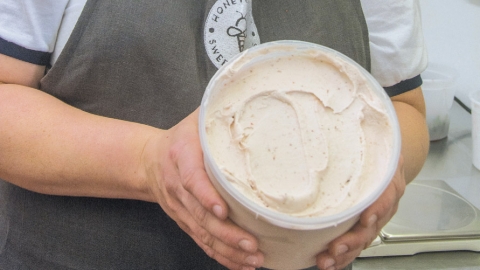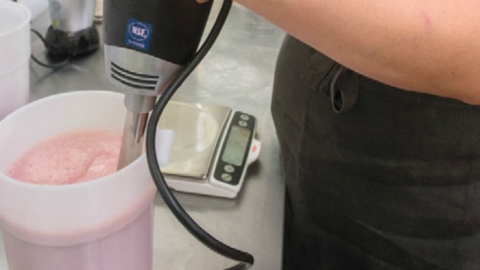Have Your Cake and Eat It - Making it in the Food Artisan World
Cottage food laws open path from home kitchen to business
It was the summer of 2013 and I was glued to the “riveting” live video feed of the Texas House of Representatives 83rd legislative session. The bill being discussed on the floor would have a defining effect on the future of my business idea. House Bill 970 passed, greatly expanding the types of food allowed under the cottage food laws in Texas—this included roasted coffee.
Fort Bend Coffee Roasters started in my garage that fall, launching our vision to bring freshly roasted coffee to Fort Bend County.
The cottage food laws regulate the types of foods that can be prepared at home, and how (and where) they can be sold to the public. Without these new rules, Fort Bend Coffee Roasters and many other artisan food producers would never have gotten past the idea stage. It was these laws, a great farmers market and a receptive community that have allowed me to grow the business from roasting in my garage into a full-fledged operation that delivers locally roasted beans to specialty coffee shops throughout Fort Bend County.
Adrienne Ramsey of Bluebird Bakery started much like Fort Bend Coffee at the Farmers Market at Imperial in Sugar Land. She sells “scratch-made baked goods with the finest ingredients obtainable, full of soul, and a lot of European butter.” That butter was the start of her business. “I was practicing a Danish dough and couldn’t consume any more butter, so I posted on my neighborhood Facebook page that I had a dozen Danishes for sale. In half an hour, I had orders for eight dozen.”
Nicole Kannenberg, another Houstonarea cottage food producer, runs Mon Chou Sweets out of her home. Unlike Ramsey, she forgoes the farmers markets and instead focuses on direct sales. Kannenberg’s business grew out of her passion for producing beautiful desserts—“edible art,” as she calls them.
Kathleen Morgan of Honeychild Sweet Creams makes frozen custard using fresh, local ingredients. She supplies her sweet creams to specialty grocery stores in the Houston area, sells at multiple farmers markets and partners with local restaurants such as Underbelly and Doughmaker Doughnuts.
Get Out There
For Fort Bend Coffee, our first step was our local farmers market. We have run a booth at the Farmers Market at Imperial ever since we started. It is still a great revenue generator, but even more importantly it is our best marketing tool. Morgan also sees farmers markets as a great tool.
“Honeychild’s presence at a farmers market in and of itself speaks to our commitment to sustainability and purchasing locally. I also find the communion with other producers, introductions and collaborations resourceful and beneficial.”
Ramsey has been able to grow Bluebird Bakery beyond her friends and neighbors by keeping a regular booth at her local market. Farmers markets and other community events are a great value for the small producer: For the cost of a weekly booth fee, they get access to a wide range of customers who are looking for local foods. Ramsey says of her cottage food business, “I bake from home because I have a 3-year-old son and as a single mom, I can bake in the middle of the night and hang out with him all day. I also detest the idea of $20K in monthly overhead that it would take to open a shop in my neighborhood. I crave simplicity in my life.”
Beyond farmers markets, there is direct-to-consumer sales. A farmers market has a set time, but direct sales allow for a more flexible schedule. Kannenberg sells her boutique-style cakes and specialty desserts directly to her customers.
My husband and boys come first. Adding a cottage business to the mix can be hectic, and by focusing on direct sales, I can set my own hours.” Without the customer-facing booth, Kannenberg focuses more on social media, maintaining a great website, and word-of-mouth.
Taking the Next Step
After a year in business, we upped the ante. We went deeper into debt, and set up a commercial roastery. This allowed us to sell our coffee to other businesses, and to run an online store (these are not options for cottage food businesses). Three years later, the booth at the farmers market is still our front lines, but our bread and butter is supplying coffee in bulk to area coffee shops and restaurants.
Expanding into the commercial world opens up many opportunities, but also requires new skills. Morgan says that one of the hardest parts of running Honeychild Sweet Creams is building relationships with her commercial accounts. “Relationship building requires time, effort and conversation before a sale can ever be made. Also patience and a degree of blind confidence are needed.”
Wholesale has its pros and cons. Selling to other business can greatly increase output, but those businesses will expect a steep wholesale discount. Scaling up can make quality control difficult, as well. Ramsey says that the hardest part of growing her business has been finding and hiring employees.
Starting a cottage food business can be exciting, frustrating and everything in-between. But, as Kannenberg says of her business, “Never forget what a blessing it is to be able to earn an income from doing something you love.”










